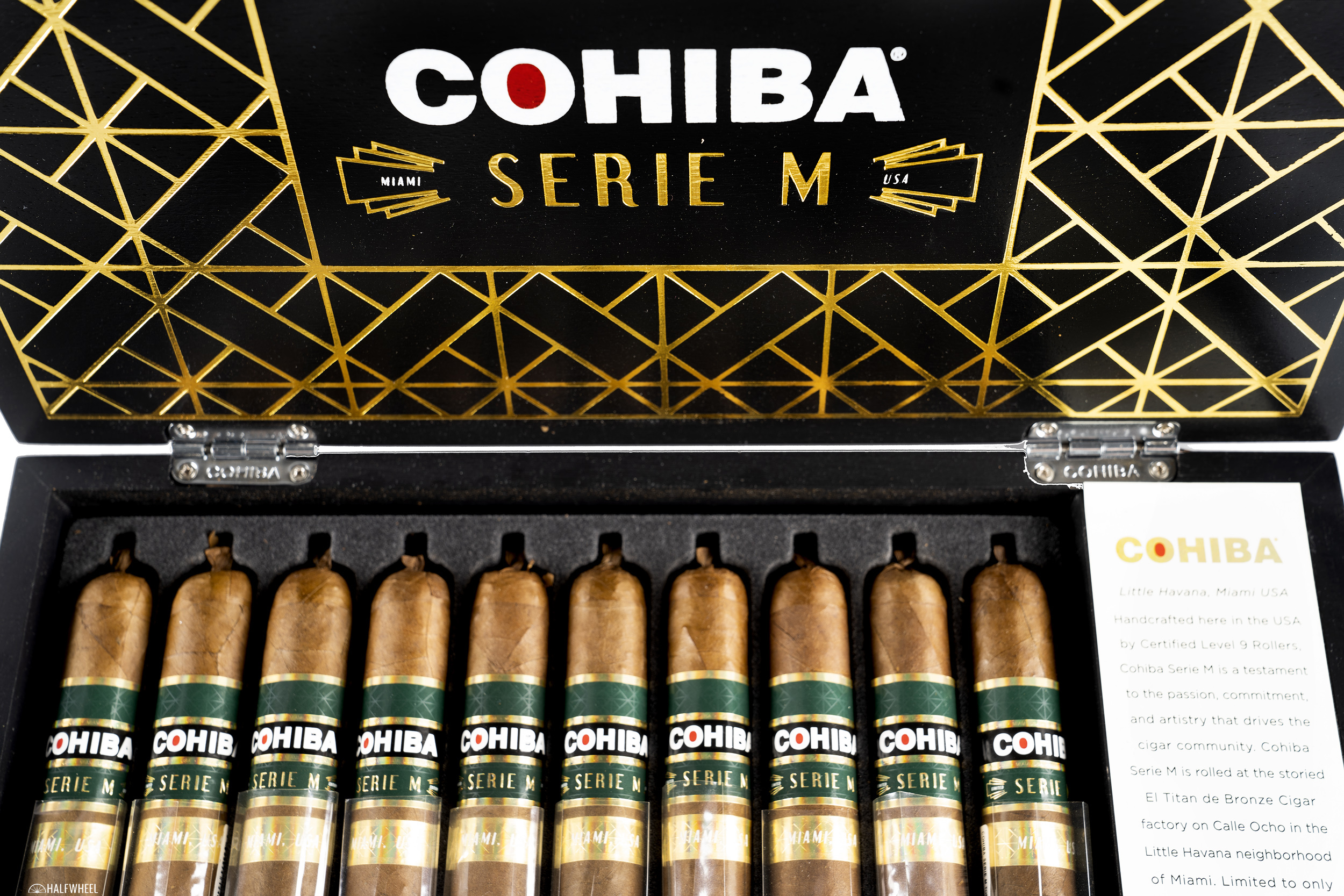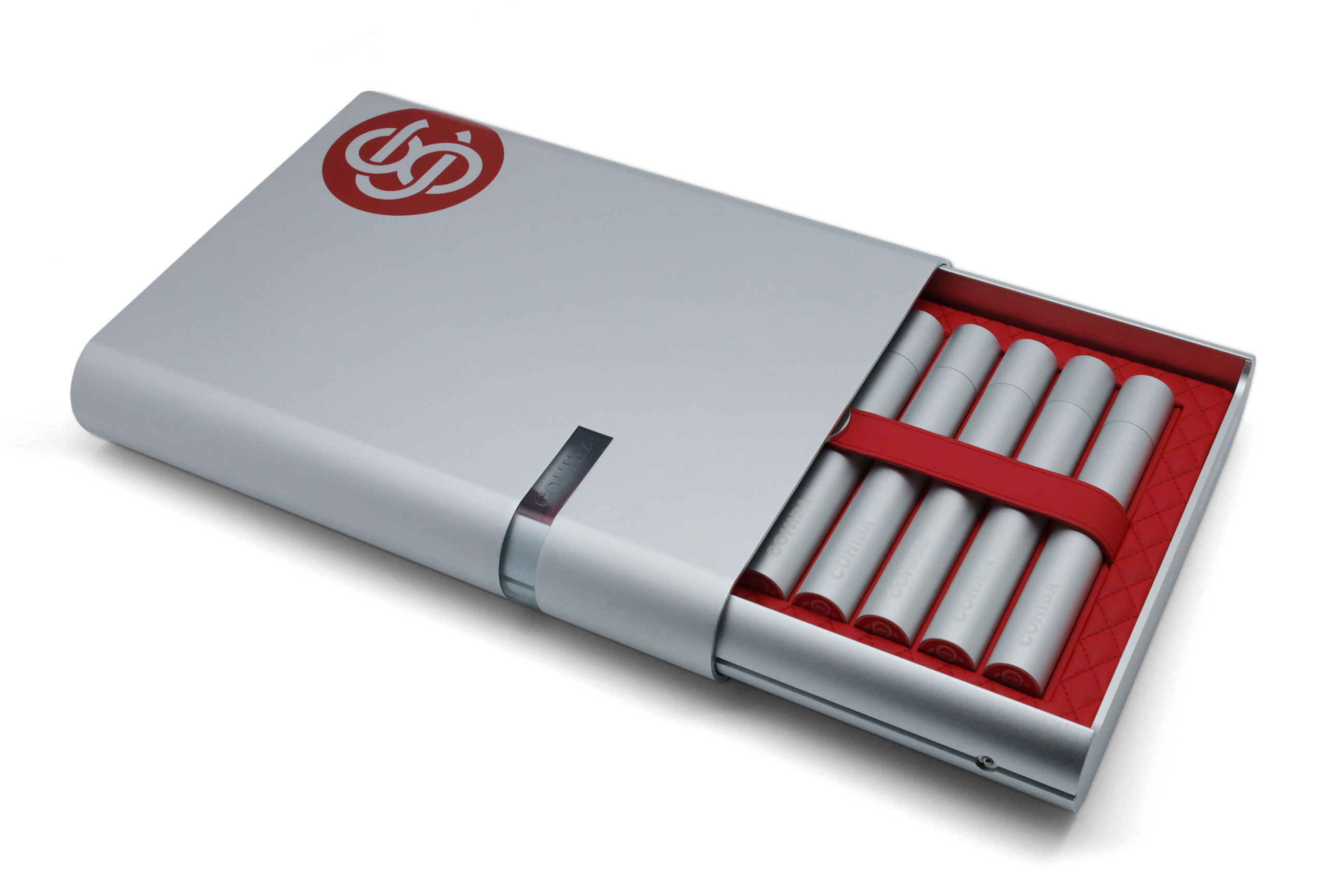General Cigar Co. creates lots of new cigars for its massive portfolio of brands and, as such, it can be tough for any particular one to stand out. Last year, General released three different notable Cohiba releases. Two of those—the 2021 version of Spectre and the even more expensive C8—I remember because of their hefty price tags, but the most memorable of the trio stood out because of where it was made.
Cohiba is General Cigar Co.’s flagship brand and almost all of the Red Dot Cohibas—a reference to the inside of the o in the logo for General’s Cohiba—have been made at the company’s factory in the Dominican Republic. But for Cohiba Serie M, General turned to a fairly small factory in Miami called El Titan de Bronze. It’s difficult to explain the contrast between General—part of a multi-national, publicly-traded behemoth—and El Titan de Bronze, which might be the smallest factory that makes cigars that end up in your local retailer’s humidor. It should be noted that this is not the first time that El Titan de Bronze has made cigars for a massive brand. The factory makes Herrera Estelí Miami for Drew Estate, a cigar that is named after Willy Herrera, Drew Estate’s master blender, who also happens to be the son-in-law of Sandra Cobas, who owns El Titan de Bronze.
There’s a connection between General’s Cohiba and El Titan de Bronze as well. Prior to his time at General, Sean Williams, Cohiba’s brand ambassador, created a brand called El Primer Mundo, which had cigars made in Miami.
“Since its debut a year ago, Cohiba Serie M has been a resounding success,” said Williams in a press release in March. “We’ve received high praise from cigar media, shop owners and cigar lovers who have called Serie M one of the most exciting Cohiba blends they have ever smoked. Together with Sandy Cobas and her team, we’re proud to release the blend in a new size, giving cigar connoisseurs another opportunity to experience the artistry of Serie M.”
That new size is the Cohiba Serie M Corona Gorda, a 6 1/2 x 48 toro extra that uses the same blend as the original 6 x 52 toro size that debuted last year: a Nicaraguan corojo wrapper over a Nicaraguan binder and filler tobaccos that include Dominican piloto cubano as well as Nicaraguan tobaccos from Estelí and Jalapa.
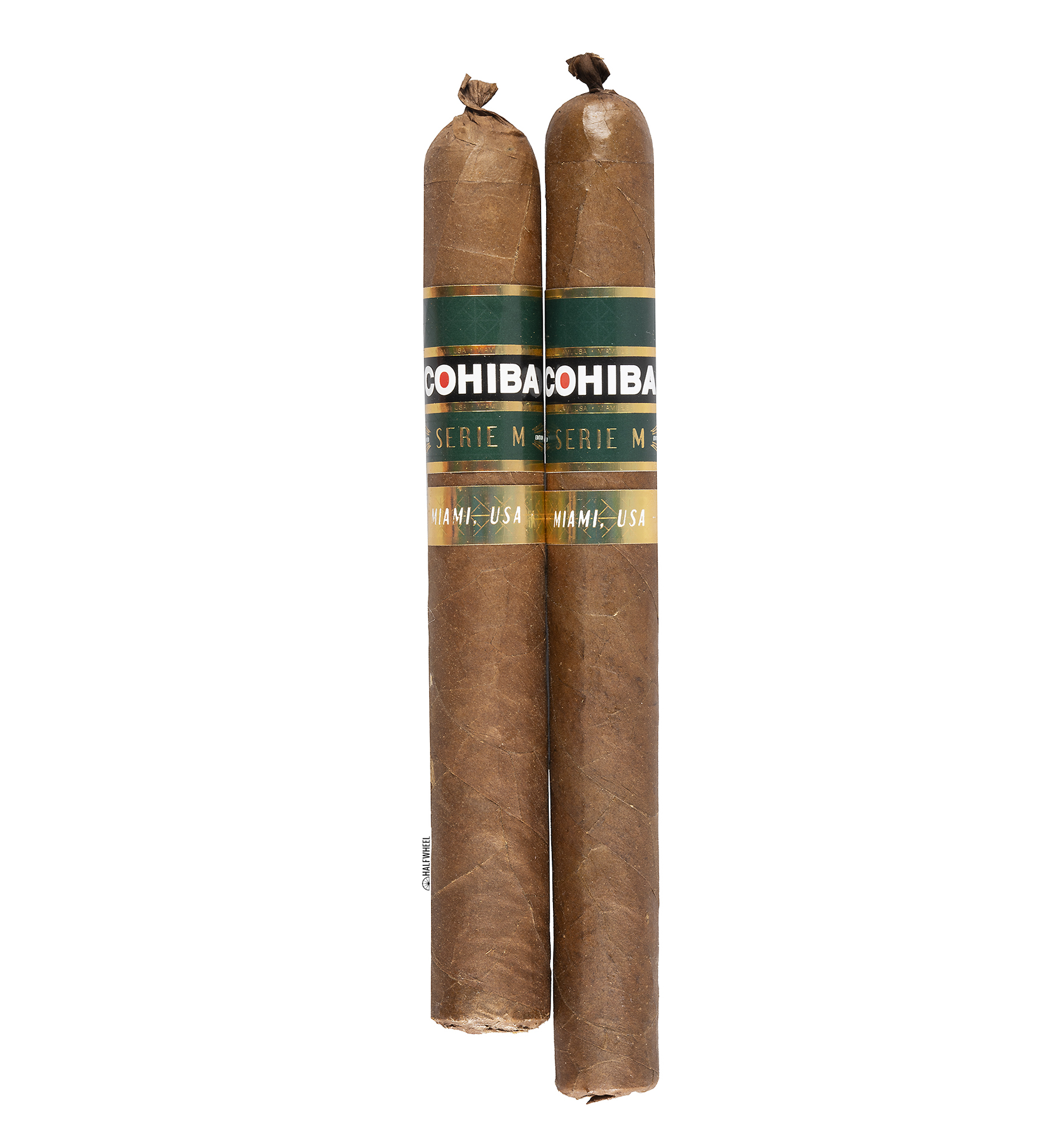
- Cohiba Serie M Toro (6 x 52) — April 2021 — 5,000 Boxes of 10 Cigars (50,000 Total Cigars)
- Cohiba Serie M Corona Gorda (6 1/2 x 48) — April 2022 — 5,000 Boxes of 10 Cigars (50,000 Total Cigars)
- Cohiba Serie M Prominente (7 x 50) — April 2023 — 4,000 Boxes of 10 Cigars (40,000 Total Cigars)*
- Cohiba Serie M Reserva Rioja (6 1/2 x 54) — April 2024 — 2,500 Boxes of 10 Cigars (25,000 Total Cigars)*
Not pictured.
85
Overall Score
If you are a fan of a variety of Davidoff’s white label cigars, the Cohiba Serie M Corona Gorda is likely going to be right up your alley. For much of the cigar, it's got the same basic core profile, albeit maybe with more body and bitterness. What’s a bit confusing to me is that it’s not at all how I remember the original Cohiba Serie M tasting just a year ago. I think that cigar was better in just about every way, but that doesn’t make the Corona Gorda bad. Burn issues cost the cigar a number of points for the final score, but they were an annoyance more than anything else. The largest issue is the price. At $30, cigars shouldn’t have many issues, even small ones.
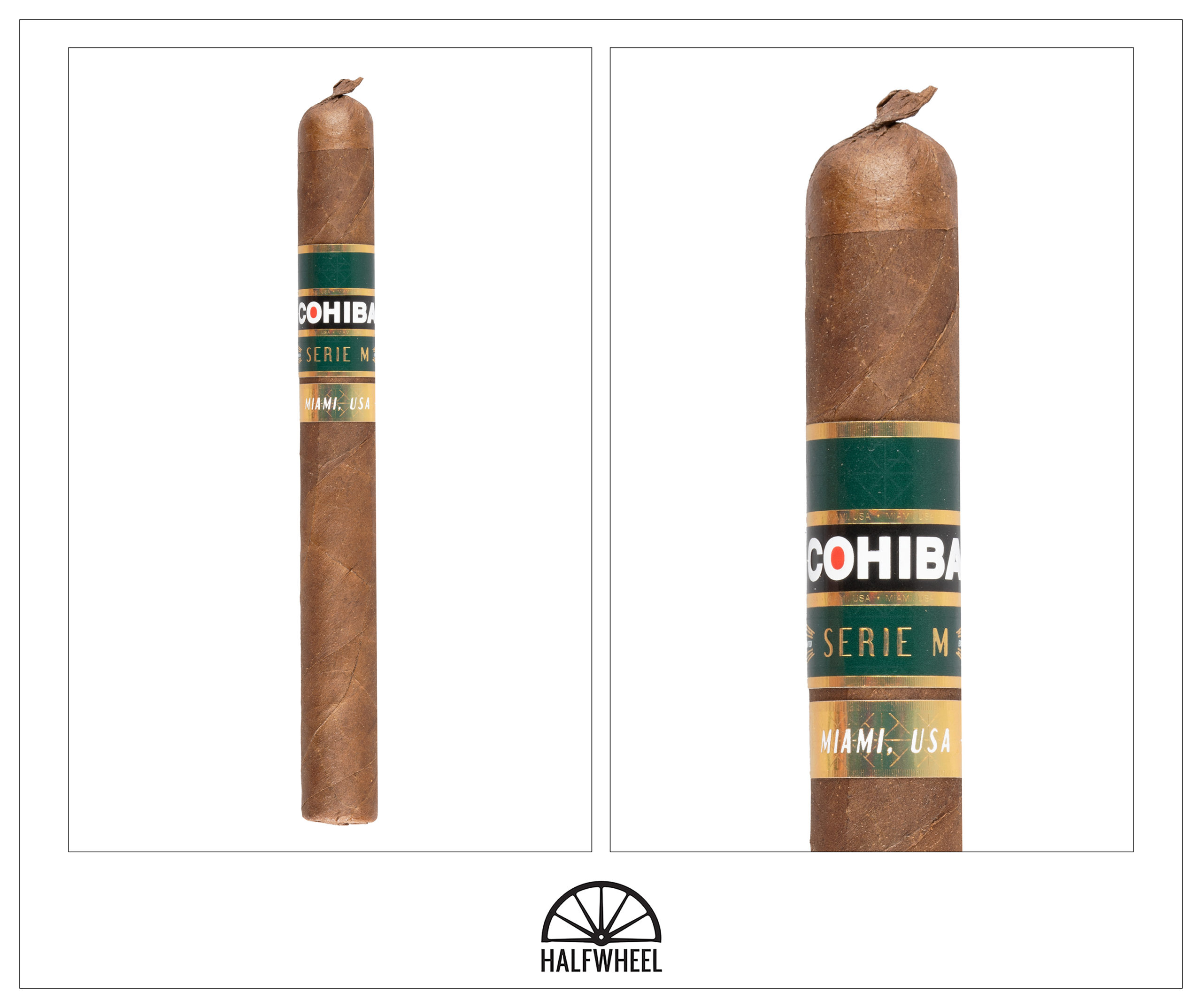
- Cigar Reviewed: Cohiba Serie M Corona Gorda
- Country of Origin: U.S.A.
- Factory: El Titan de Bronze
- Wrapper: Nicaragua (Corojo)
- Binder: Nicaragua
- Filler: Dominican Republic (Piloto Cubano) & Nicaragua (Estelí and Jalapa)
- Length: 6 1/2 Inches
- Ring Gauge: 48
- Vitola: Toro Extra
- MSRP: $29.99 (Box of 10, $299.90)
- Release Date: April 2022
- Number of Cigars Released: 5,000 Boxes of 10 Cigars (50,000 Total Cigars)
- Number of Cigars Smoked For Review: 3
Even without the nice bands, the Cohiba Serie M Corona Gorda is a very distinctive cigar. There’s an impressively-applied triple cap, finished off with a pigtail, though the most notable thing is probably the foot. It’s fully covered and almost wrapped around the bottom of the cylinder. I’d be remiss if I failed to mention that this is not what I would call a corona gorda. A traditional corona gorda measures 5 5/8 inches by 46 ring gauge; even without looking up the dimensions, I can you this is too long. As it turns out, this measures 6 1/2 x 48, which is closer to a traditional Churchill’s dimensions—7 x 47—than it is to the corona gorda. My real issue isn’t that it crossed some line where the dimensions are too large for a corona gorda, rather, it doesn’t feel like a corona gorda in the hand. Speaking of feeling the cigar, the tan-colored wrapper is bumpier than normal when I run my fingers down the cigar. While there’s a medium level of aroma coming from the wrapper, it’s not the most easy-to-identify sensation. It reminds me of the smell of newspapers and the smell of school cafeteria mashed potatoes. Given that the foot is fully covered by the wrapper, I can’t smell anything different from the foot. As for the cold draw, if I didn’t already know this cigar was made at El Titan de Bronze, I probably would have a strong feeling that it might be after taking my first. There’s some floral flavors, something that reminds me of bottled water and a touch of nuttiness. Intensity-wise, I’d say it’s medium-full and the draw is surprisingly good despite the completely covered foot.
As with every cigar with a covered foot, I spend a bit more time and give more attention to ensuring the cigar is properly lit, specifically that the filler tobaccos are lit and not just the parts of the covered foot. Fortunately, the Cohiba Serie M Corona Gorda lights without issue though it certainly needs the extra care. The first puff delivers a similar flavor to the cold draw: nuttiness, the bottled water sensation and then a finish that leaves an aftertaste that seems like I might have just finished eating mixed nuts and popcorn. It’s pretty bright and medium-full. That more or less is how I’d describe the first third as a whole, there’s just not that much change from that first puff to what I’m tasting 30 minutes later. There’s some mild harshness that joins the profile—still not a pepper flavor—and some creaminess underneath, but it’s led by the bottled water flavor, nuttiness and something that reminds me of popcorn’s aftertaste. That said, the finish does change a lot. The flavors that it has are interesting—pizza dough, sweet coffee, floral sweetness and cinnamon—but the whole combination is very sharp. Retrohales have sweet cedar, fruitiness and a strong terroir flavor. It finishes with yellow mustard, cedar, cinnamon, toastiness and some added harshness. While the retrohale’s flavor is full, the main flavor is medium-full, body is medium-full and strength is medium. Two cigars need touch-ups during the first third.

At various points of the cigar, the Cohiba Serie M Corona Gorda spends a decent amount of time tasting like some classic Davidoffs. In two cigars, that’s the middle part of the cigar, but in the final cigar it takes place in the first third. Whenever it happens, it’s pretty much the same story: a thicker profile led by a taste I most associate with Davidoff’s olor tobaccos. I find that flavor to be a musty hay profile, though others describe it as being like mushrooms. In addition to that olor flavor, there’s nuttiness and creaminess with mild amounts of pepper. It’s a combination that is very reminiscent of milder Davidoffs, though a profile that Davidoff doesn’t really use in its more modern product. The third cigar—the one that has this profile during the first third—is led by nuttiness and white bread over watered-down espresso, white bread and some graham cracker sweetness. The finish has a more bitter version of that Davidoff-like flavor along with minerals, some generic harshness, and white pepper on the back of the throat. One weird aspect is that it feels like my tongue has been burnt from temperature, though that’s not what happened. There’s just a numbness in the center of my tongue that is there for about 20 minutes but eventually disappears. Retrohales have a brighter floral flavor, more of that olor-like mustiness and white pepper. The finish has mineral flavors, a terroir-like earthiness and some sesame seeds. Flavor is at or near full, body is medium-full and strength is medium-plus. Keeping the cigar lit consistently is a bit more challenging than it should be and I’m forced to touch up each cigar.
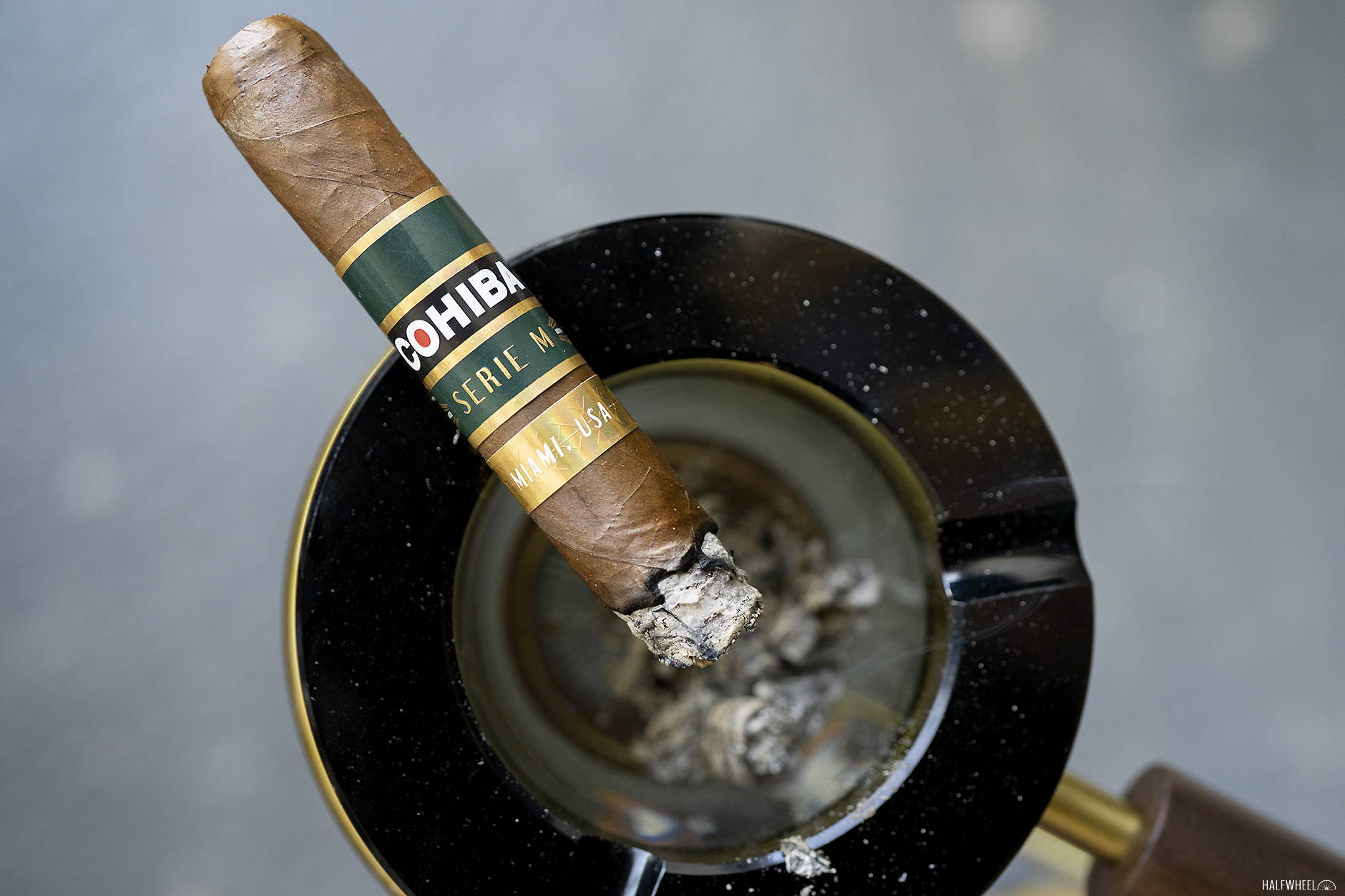
The final third has creaminess, saltiness, leather, white pepper and earthiness. One sample varies a bit with more meatiness and some petroleum-like flavors, but with all three cigars, the final third seems less detailed than the first third. The finish is led by creaminess over espresso, saltiness and leather. The levels of saltiness varied greatly between the cigars with it being the strongest sensation on one cigar to quite mild on another. Retrohales have a floral sweetness and then more of the olor flavor along with a different type of saltiness that hits the edges of the tongue. Once the smoke leaves my nostrils, there’s meatiness, creaminess, herbal flavors and earthiness. Flavor is full, body is medium-full and strength is medium-plus. Touch-ups continue to be needed, once again, just to help keep the cigar burning until the end.
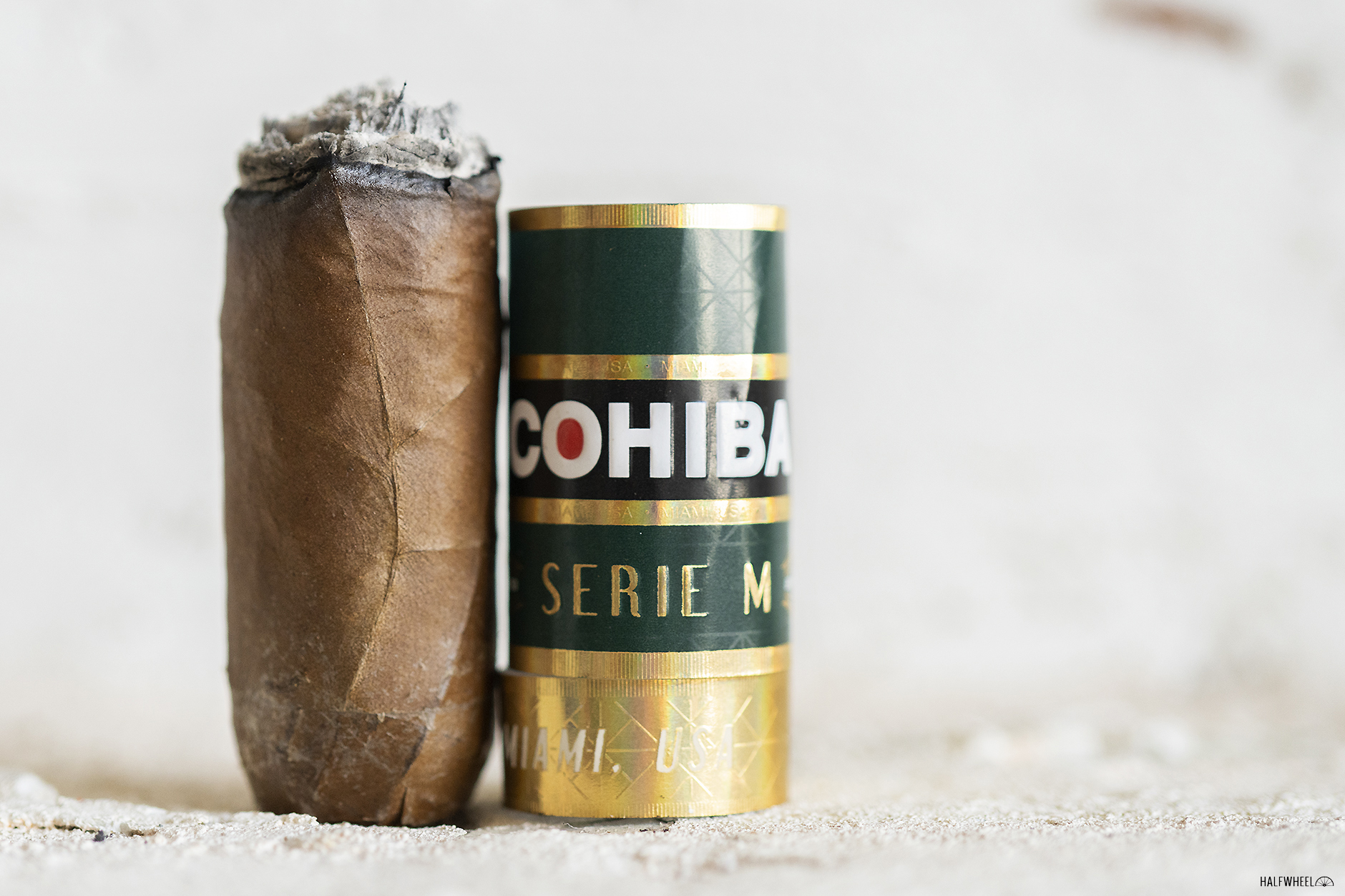
Final Notes
- I really like how this cigar sits in a box. What I mean by that is not the literally sitting in the box; rather, it’s a cigar that has a decent enough story, good packaging and appears well-rolled. It’s not that I think the actual cigar is bad, it’s just there are few cigars that I find to be conceptually as solid as this one.

- There’s a vein on one cigar that poked through the wrapped and caused some tiny breakage.
- I felt like one cigar had some weird structural issues around the cap. When I was taking cold draws, it felt like the area at the top of the cylinder was collapsing a lot with just the slightest amount of pressure. I can’t recall the last time I smoked a cigar where this happened, as it feels like it has been years. That said, I’m somewhat surprised this doesn’t happen more often, given how cigars are made.
- Midway through smoking one of these, I texted a friend who I know is a very large fan of Davidoff and told him that I felt like this cigar was very similar in taste to lots of Davidoffs.
- Given how General Cigar Co. operates, I suspect there will be a new size next year. As long as the cigar keeps selling well and El Titan de Bronze can handle the production, this seems like a project that will continue.
- General Cigar Co. advertises on halfwheel.
- Cigars for this review were purchased by halfwheel.
- Final smoking time was two hours and 20 minutes.
- Site sponsor Famous Smoke Shop carries the Cohiba Serie M Corona Gorda.
85
Overall Score
If you are a fan of a variety of Davidoff’s white label cigars, the Cohiba Serie M Corona Gorda is likely going to be right up your alley. For much of the cigar, it's got the same basic core profile, albeit maybe with more body and bitterness. What’s a bit confusing to me is that it’s not at all how I remember the original Cohiba Serie M tasting just a year ago. I think that cigar was better in just about every way, but that doesn’t make the Corona Gorda bad. Burn issues cost the cigar a number of points for the final score, but they were an annoyance more than anything else. The largest issue is the price. At $30, cigars shouldn’t have many issues, even small ones.
I am an editor and co-founder of halfwheel.com/Rueda Media, LLC. I previously co-founded and published TheCigarFeed, one of the two predecessors of halfwheel. I have written about the cigar industry for more than a decade, covering everything from product launches to regulation to M&A. In addition, I handle a lot of the behind-the-scenes stuff here at halfwheel. I enjoy playing tennis, watching boxing, falling asleep to the Le Mans 24, wearing sweatshirts year-round and eating gyros. echte liebe.







